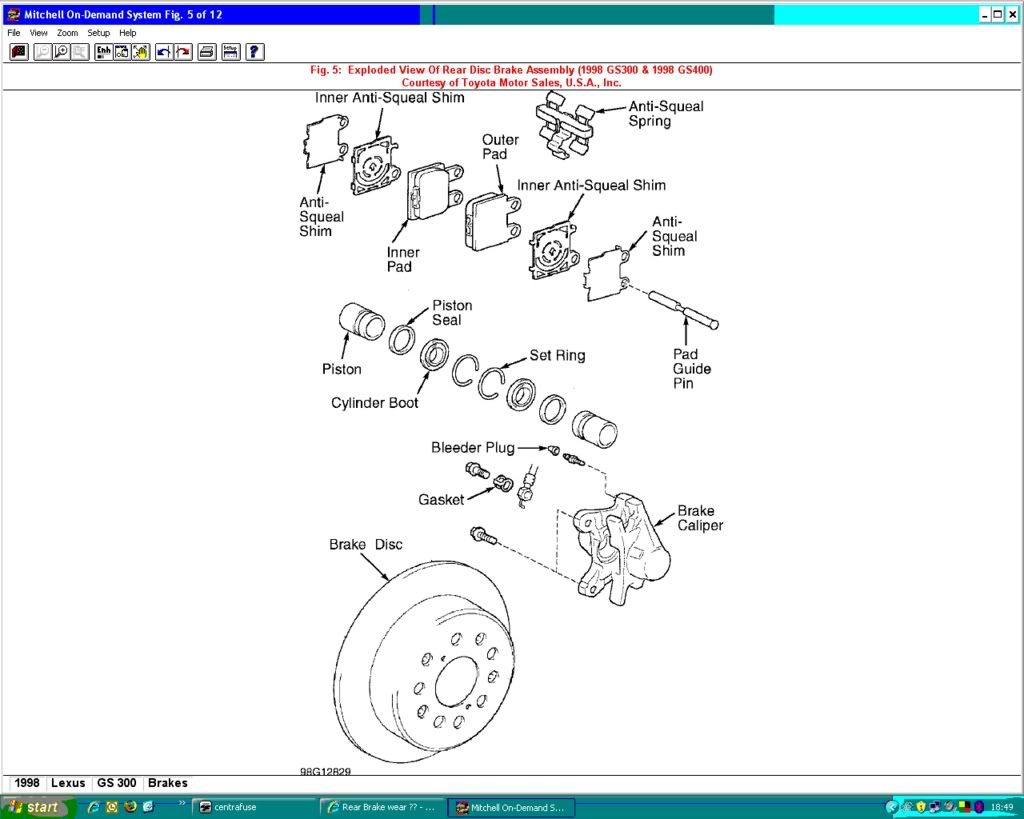Rear Brake wear ??
#1
How many miles do you get out of your brakes ? bought my 2001 430, with 58000 miles on it 1 year ago. As soon as i bought it i noticed the rear bads were paper thin. I replaced them with some cheapo Satisfied pads, and since put 18's on the car. ( the front pads were thick as hell) Conventiaonl wisdom telling me that you should wear out your front pads before the back....i figured i would not be messing with the rear for a LONG time....well 20k miles later yesterday I heard the rear grinding and thought WTF ....pulled the pads today...toasted. I bought pricier Ceramic pads, and chucked them in ....and looked at the fronts....still meaty as hell. What gives ?
....pulled the pads today...toasted. I bought pricier Ceramic pads, and chucked them in ....and looked at the fronts....still meaty as hell. What gives ?
 ....pulled the pads today...toasted. I bought pricier Ceramic pads, and chucked them in ....and looked at the fronts....still meaty as hell. What gives ?
....pulled the pads today...toasted. I bought pricier Ceramic pads, and chucked them in ....and looked at the fronts....still meaty as hell. What gives ?
#2
Thats weird, check to see if you can spin your wheel freely when jacked up. Maybe your pads are sticking. But either way, the pads wear fast on my car, but I might be just aggressive. I do the pads every year.
#4
On a related note, could someone tell me how to check the pads to see if they need to be replaced? Is anyone aware of a DIY to replace the pads. Chuck, I know you did the pads on your old ES, but did you ever try to do the pads on the GS?
#5
It is pretty straight forward e-man. If you ever did your own pads on any car, this will be very similar. There aren't any special tricks really. I use a pick to check my pads. I basically feel out how much pad I have left with the pick.
#7
Trending Topics
#8
Checking the pads:
Pull off the wheel and look at the pad thickness by looking straight down through the center of the brake caliper. Pads must be thicker than 2-3mm (not including the metal pad support!) on both sides. If one pad is worn a lot more than the other you may have a sticky/siezed piston.
Changing the pads:
If the pads are worn (and roughly the same thickness) changing them is SOOO easy.
- Push down the spring clip towards pads
- Pull out the safety pin and remove spring clip
- Pull out the old pads
- Push back the pistons SLOWLY
- Stuff in the new pads (apply anti-squeal grease if neccessary)
- Refit and push down the spring clip
- Push in the safety pin
New pads done.
Now is also the time to adjust the rear shoes for the handbrake (the tiny hole between 2 lugnuts)
Pull off the wheel and look at the pad thickness by looking straight down through the center of the brake caliper. Pads must be thicker than 2-3mm (not including the metal pad support!) on both sides. If one pad is worn a lot more than the other you may have a sticky/siezed piston.
Changing the pads:
If the pads are worn (and roughly the same thickness) changing them is SOOO easy.
- Push down the spring clip towards pads
- Pull out the safety pin and remove spring clip
- Pull out the old pads
- Push back the pistons SLOWLY
- Stuff in the new pads (apply anti-squeal grease if neccessary)
- Refit and push down the spring clip
- Push in the safety pin
New pads done.
Now is also the time to adjust the rear shoes for the handbrake (the tiny hole between 2 lugnuts)
#11

2 further points if you plan to do this DIY
- Dont push the piston too far back, you will overflow the brake fluid reservoir. Brake fluid is nasty stuff.
- Dont use anti-squeal grease if you use anti squeal shims as above!
FYI. The parking brake must click 7-9 times for correct adjustment. These are shoes in behind the discs. That equals 4 pads per rear wheel! You should never need to change the rear shoes as they dont slow the car down, only hold it in place.

Last edited by gs-ireland; 01-24-07 at 12:38 PM. Reason: typo
#15
You will notice that owners with 00+ notice more rear pad wear. This is largely due in part to Electronic brake distribution. This reduces brake dive, and adjusts brake power according to weight load on each axle. This has a lot to do with why our rear pads wear quick.


